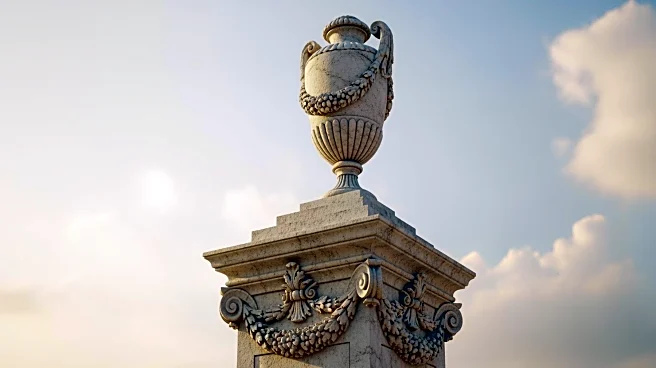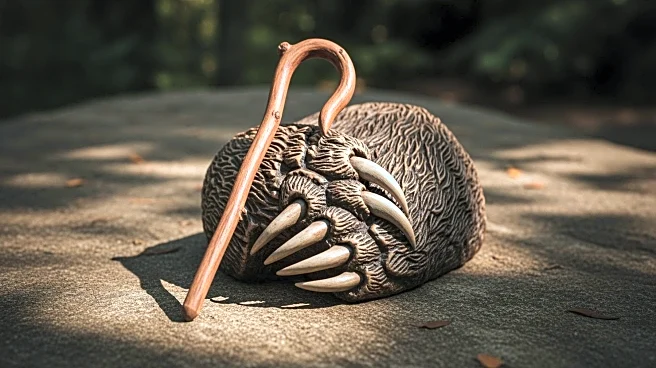What's Happening?
The Mausoleum at Halicarnassus, located in Bodrum, Turkey, is one of the Seven Wonders of the Ancient World. Built around 350 BCE, it was commissioned by Artemisia II in memory of her brother and husband,
Mausolus, after his death. The mausoleum was a temple-like structure designed by Greek architects, combining Greek, Egyptian, and Lycian styles. Despite its historical significance, very little remains of the mausoleum today, with most of its artifacts housed in the British Museum. The site continues to attract tourists interested in its rich history and architectural marvels.
Why It's Important?
The Mausoleum at Halicarnassus represents a significant cultural and historical legacy, showcasing the architectural and artistic achievements of ancient civilizations. Its story highlights the complex social and familial structures of the time, including the practice of sibling marriages among royalty. The preservation and study of such sites offer valuable insights into ancient societies and their influence on modern culture. For the U.S., understanding these historical contexts enriches cultural appreciation and supports global heritage conservation efforts.
Beyond the Headlines
The mausoleum's history reflects broader themes of power, legacy, and the human desire to memorialize loved ones. The practice of sibling marriage among royalty, while uncommon, underscores the strategic alliances formed to maintain dynastic power. The site's archaeological significance continues to inspire research and exploration, contributing to the understanding of ancient civilizations and their impact on contemporary society. The preservation of such wonders is crucial for cultural heritage and education.













